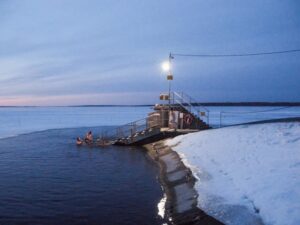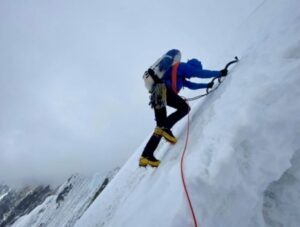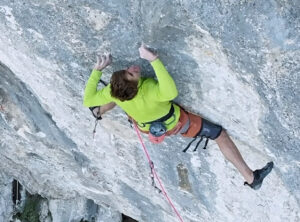Since 1980, more than 400 more people have climbed the Seven Summits — the highest mountains on each continent. A lesser-known and rarely attempted sister challenge is the Volcanic Seven Summits, which was first accomplished by Italian Mario Trimeri and 16-year-old Romanian Crina Popescu in 2011. To date, fewer than 25 people have completed it.
1. Mount Sidley (4,285m), Antarctica

Photo: Google Earth, Maxar Technologies and U.S. Geological Survey
The Executive Committee Range of Marie Byrd Land has five 2,610m to 4,285m volcanoes, scattered over an 80km north-south line. Another eight subsidiary peaks lie in their vicinity. New Zealander Bill Atkinson first climbed Mt. Sidley in 1990 while working on a scientific field party for the United States Antarctic Program. Approximately 10 teams totaling 50 people have reached its summit.
2. Mount Giluwe (4,368m), Papua New Guinea

Photo: James Stone, clachliath.com
Mount Giluwe is located in Papua New Guinea’s grassy Southern Highlands and is a 650,000 to 800,000-year-old shield volcano, a type where swiftly flowing lava forms broad and gentle slopes. Two kilometres separate its two volcanic plug summits. During the last Ice Age, 150m-thick glaciers covered Giluwe’s upper slopes. The Leahy brothers from Australia were the first to climb it in 1935, and one of the duo, Mick, also embarked on several gold prospecting expeditions on foot and by light aircraft in the region. From Mailka village (3,450m), one can reach the summit in a four-day round trip, and many climbers frequently tie in their journey with an ascent of Mt. Wilhelm (4,509m), the country’s highest point.
3. Mount Damavand (5,610m), Iran

Photo: Matthew Traver
Mount Damavand is the highest peak in Iran and the Middle East, as well as the overall highest volcano in Asia. On a clear day, you can see the Caspian Sea 70km away. Fumaroles on its summit suggest that it is potentially active, although it last erupted in 5300 BC, around the heyday of ancient Egypt. The first known person to reach the top was Iranian poet and travel writer Abu Dulaf al-Khazraji more than a millennia ago. Over the centuries, local Iranians have mined sulfur from its slopes and caldera.
4. Picos de Orizaba (5,636m), Mexico

Photo: Radamantis Torres, Flickr
The dormant Pico de Orizaba is Mexico’s highest peak, and its northern slopes are home to nine glaciers, with Gran Glaciar Norte being the country’s largest. American soldiers F. Maynard and William F. Raynolds completed the first ascent in 1848. Nowadays, up to 2,000 people per year attempt to climb it, and about half that number reach the summit.
5. Elbrus (5,642m), Russia

Photo: Rustam Altuev, Unsplash
Twin-peaked Elbrus, located in Russia and bordering Georgia, is Europe’s highest peak. Its east summit (5,621m) was first reached in 1829 by a local Circassian guide, Khillar Khachirov, who was working for an Imperial Russian army scientific expedition. In 1874, a British-Swiss team led by Florence Crauford Grove and his local guide, Akhia Sottaiev, reached the west summit (5,642m).
6. Kilimanjaro (5,895m), Tanzania

Photo: Sergey Pesterev, Unsplash
Much loved by trekkers and Seven Summiters, the triple-coned Tanzanian peak of Kilimanjaro is the fourth most prominent peak in the world, thanks to its mighty 4,900m rise from the savannah floor. The first known ascent of Kili was by German duo Hans Meyer and Ludwig Purtscheller in 1889. Up to 35,000 people attempt to climb it each year, but less than 50 percent make it to the top.
7. Ojos del Salado (6,893m), Argentina/Chile

Photo: Serge, Flickr
Located on the Argentinian-Chilean border, Ojos del Salado is an active stratovolcano, meaning that it was formed by multiple layers of ash, pumice, and lava. Jan Alfred Szczepański and Justyn Wojsznis of Poland first climbed it in 1937. The easiest way to the summit is up the Chilean side, which has three refuges between 4,500 and 5,800m, compared to the Argentinian route, which is tents-only.







CORRECTION: Crina Coco Popescu and Trimeri became simultaneously the first Seven Volcanoes summiteers.
See this report by exweb from just before she climbed the last of the seven, Mount Sidley.
https://explorersweb.com/polar/news.php?id=19868
@MMP, thanks for pointing this out and your link. Correction made.
Good to learn 🙂